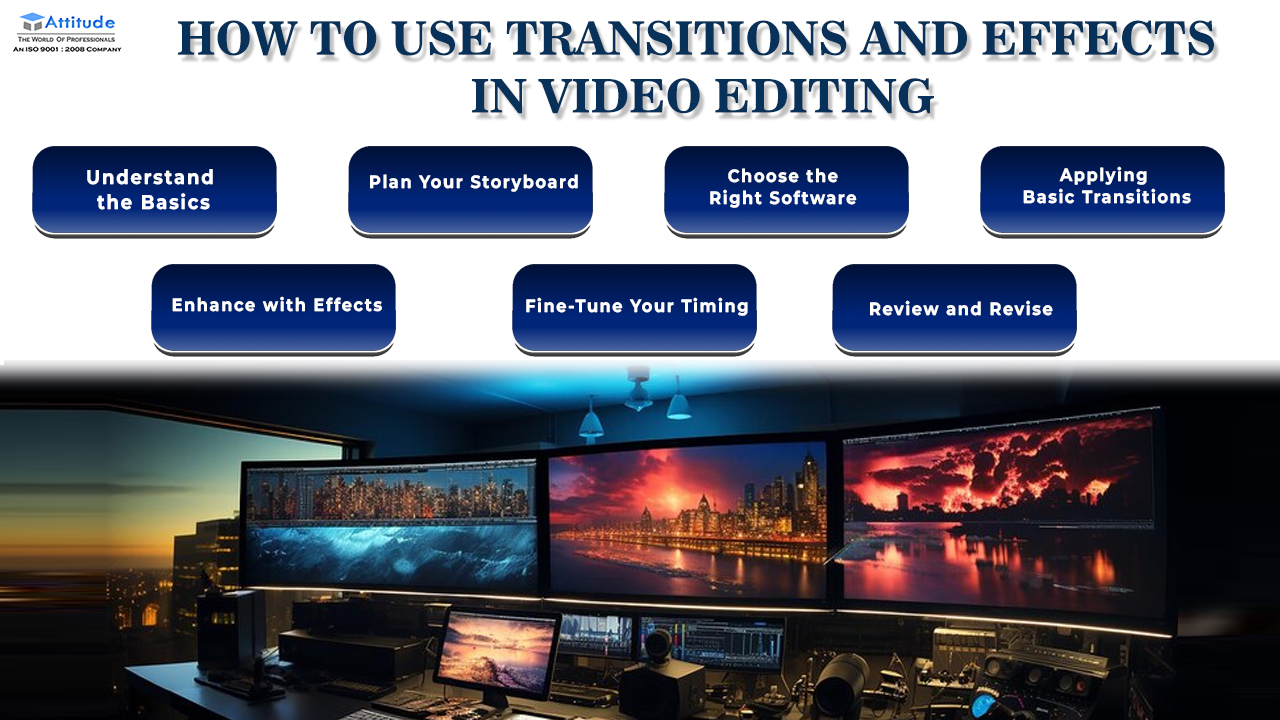Introduction
Video editing is a powerful tool that can transform your raw footage into a captivating story. To make your videos stand out, understanding how to use Professional video transitions and effects effectively is crucial. This blog will guide you through the essentials, making the process simple and enjoyable. Let’s dive in!
- Understand the Basics
Before diving into complex transitions and effects, it’s important to grasp the basics. Familiarize yourself with your editing software’s interface and tools. Learn the fundamental concepts like cutting, trimming, and joining clips. Mastering these basics will provide a solid foundation for your editing journey.
- Plan Your Storyboard
A well-thought-out storyboard is the backbone of any great video. It helps you visualize the flow and structure of your video. Planning your storyboard allows you to determine where transitions and effects will be most effective. Sketch out your scenes and note down the transitions and effects you envision. This step ensures a cohesive and engaging final product.
- Choose the Right Software
Selecting the right video editing software is crucial for your success. Look for software that offers a wide range of professional video transitions and effects. Popular options include Adobe Premiere Pro, Final Cut Pro, and DaVinci Resolve. Each of these programs provides robust features that cater to different skill levels and requirements. Choose the one that best suits your needs and budget.
- Apply Basic Transitions
Transitions are the glue that holds your video together. Basic transitions like cuts, fades, and dissolves help maintain the flow and make your video visually appealing. Use transitions to move seamlessly from one scene to another. However, be mindful not to overuse them, as too many transitions can distract from your content.
- Enhance with Effects
Enhancing your video with effects can add a professional touch and make your content more engaging. Effects like slow motion, color grading, and motion graphics can significantly enhance the visual appeal of your video. Use effects to highlight key moments, create mood, and add a unique style to your content. Remember, less is often more; use effects sparingly to maintain a polished look.
- Fine-Tune Your Timing
Timing is everything in video editing. Ensure your transitions and effects are well-timed to match the rhythm of your video. Adjust the duration of transitions and the speed of effects to create a smooth and natural flow. Fine-tuning your timing can make a significant difference in the overall quality of your video.
- Review and Revise
The final step in the editing process is to review and revise your work. Watch your video multiple times to identify any areas that need improvement. Pay attention to the transitions and effects, ensuring they enhance the story rather than detract from it. Make necessary adjustments and ask for feedback from others. A fresh pair of eyes can offer valuable insights.
Conclusion
Using transitions and effects in video editing can elevate your content and captivate your audience. By understanding the basics, planning your storyboard, choosing the right software, applying basic transitions, enhancing videos with effects, fine-tuning your timing, and reviewing and revising, you can create professional and engaging videos. Embrace the creative process and have fun experimenting with different techniques. Remember, practice makes perfect!
Suggested Links: –




